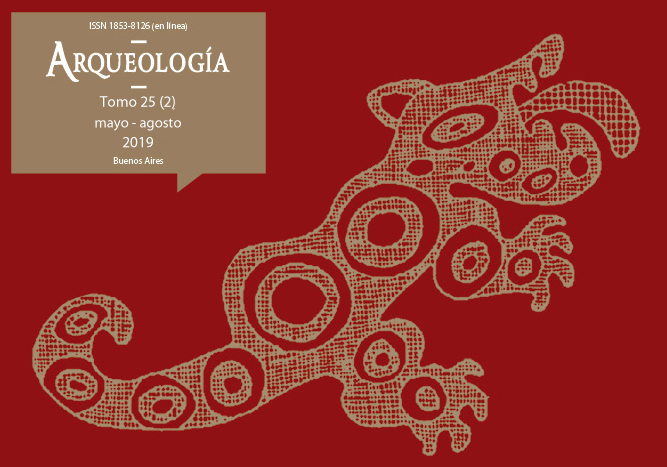El manejo del agua en la cuenca inferior de Miriguaca (Antofagasta de la Sierra): diseño de red y tecnologías hidráulicas prehispánicas
Palabras clave:
Redes de riego, Represa, Puna
Resumen
En este trabajo se presentan nuevas evidencias sobre las tecnologías paleohidráulicas de la red de riego de Miriguaca 1 (MS1) localizada en Antofagasta de la Sierra (Catamarca). Estas evidencias permiten profundizar sobre las interpretaciones del funcionamiento y los diseños hidráulicos de las redes conocidas hasta el momento en la Puna meridional argentina. A través de análisis de imágenes satelitales y de controles pedestres se logró identificar una gran cantidad de campos de cultivo y canales e incluso sus modificaciones. También se detectó el uso de una represa de riego, la cual constituye la primera evidencia de esta naturaleza para la Puna meridional. Este dispositivo hídrico habría permitido la acumulación de agua para una mayor extensión de riego y un control sobre el tiempo para el uso del agua. En base al material arqueológico vinculado a la red de riego y su diseño se discute la cronología de su construcción y sus modos de uso.Descargas
La descarga de datos todavía no está disponible.
Publicado
2019-06-01
Cómo citar
Grana, L., Quesada, M., & Gasparotti, L. (2019). El manejo del agua en la cuenca inferior de Miriguaca (Antofagasta de la Sierra): diseño de red y tecnologías hidráulicas prehispánicas. Arqueología, 25(2), 51-69. https://doi.org/10.34096/arqueologia.t25.n2.6849
Sección
Artículos
Derechos de autor 2019 Lorena Grana, Marcos Quesada, Leticia Gasparotti

Esta obra está bajo licencia internacional Creative Commons Reconocimiento-NoComercial-CompartirIgual 4.0.
Los autores/as que publiquen en esta revista aceptan las siguientes condiciones:
- Los autores/as conservan los derechos de autor y ceden a la revista el derecho de la primera publicación, con el trabajo registrado mediante Licencia Creative Commons 4.0 Internacional (CC-BY-NC-SA), que permite a terceros utilizar lo publicado siempre que mencionen la autoría del trabajo y a la primera publicación en esta revista.
- Los autores/as pueden realizar otros acuerdos contractuales independientes y adicionales para la distribución no exclusiva de la versión del artículo publicado en esta revista (p.e. incluirlo en un repositorio institucional o publicarlo en un libro) siempre que indiquen claramente que el trabajo se publicó por primera vez en esta revista.
- Se permite y recomienda a los autores/as a publicar su trabajo en Internet (p.e. en sus sitios web personales o en depósitos institucionales), tanto antes como después de su publicación en esta revista, siempre y cuando proporcionen información bibliográfica que acredite, si procede, su publicación en ella. De esta manera, pueden favorecerse intercambios productivos y a una mayor y más rápida difusión del trabajo publicado (vea The Effect of Open Access).



.png)

(1)13.png)






1.jpg)
1.png)
1.jpg)


13.png)
1.png)


(1)1.png)









